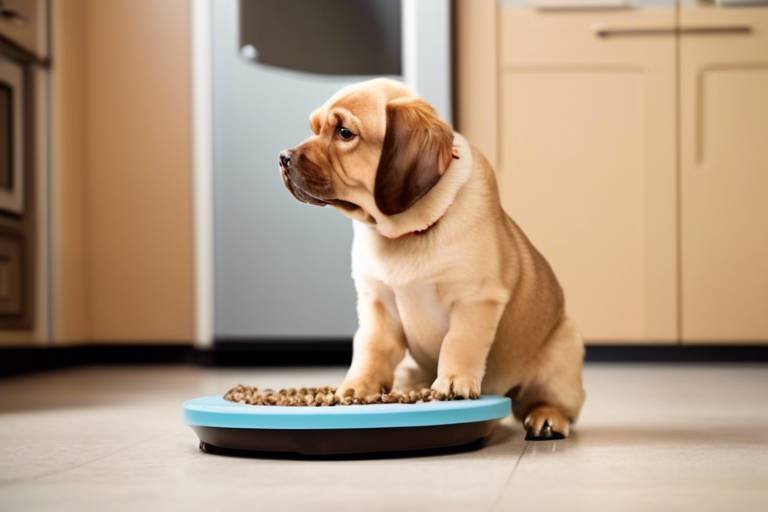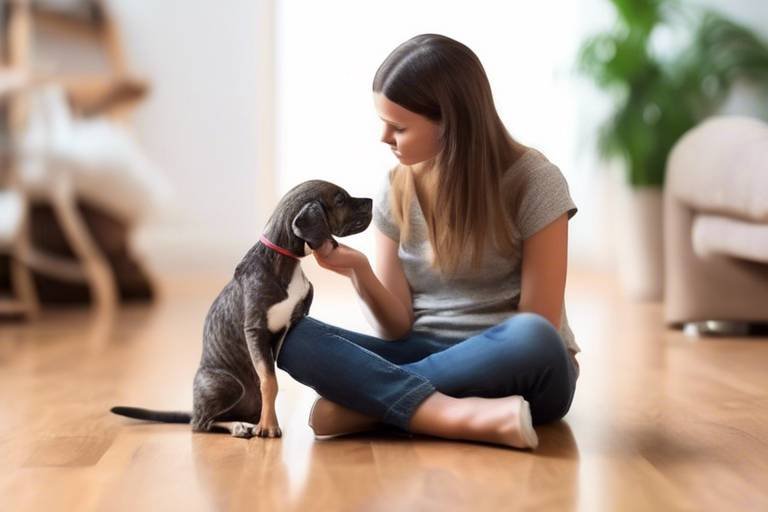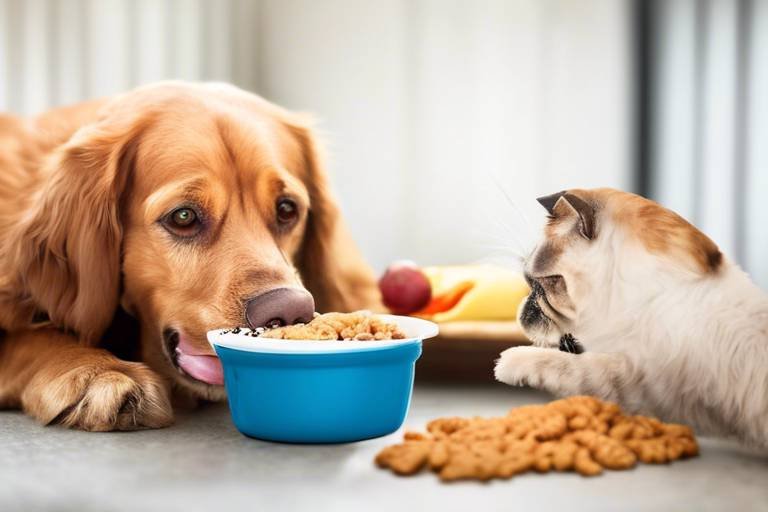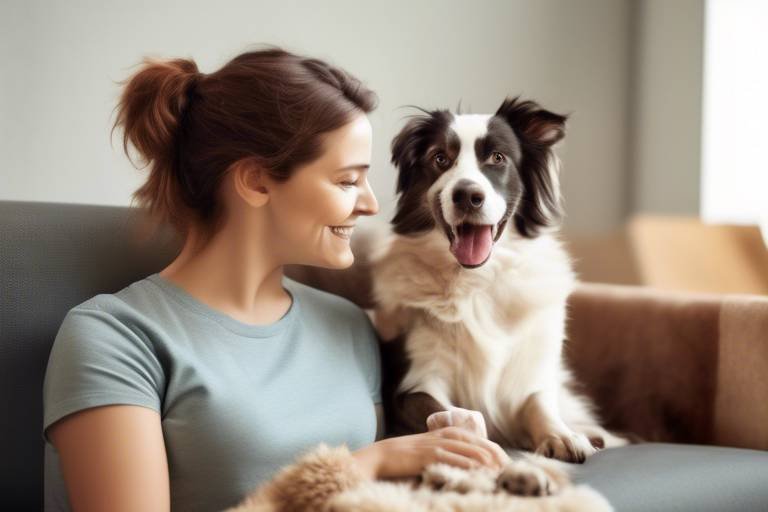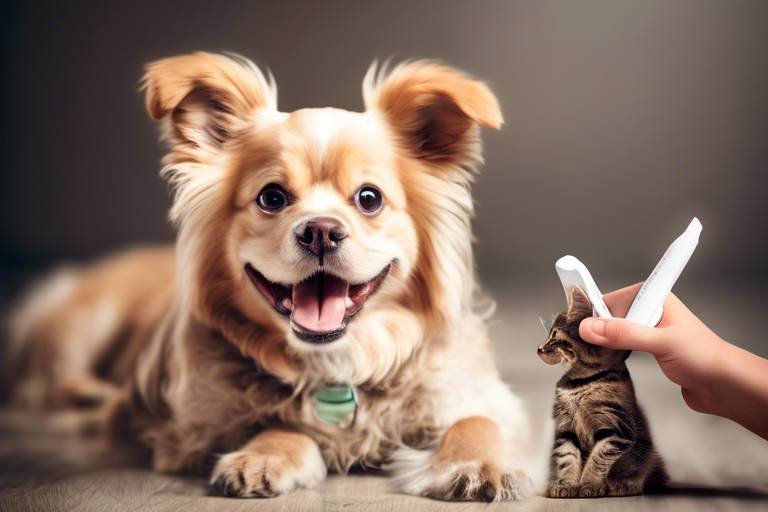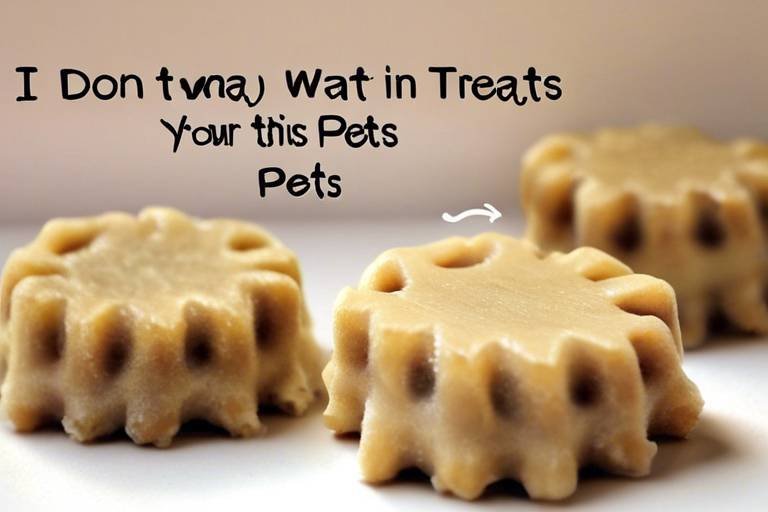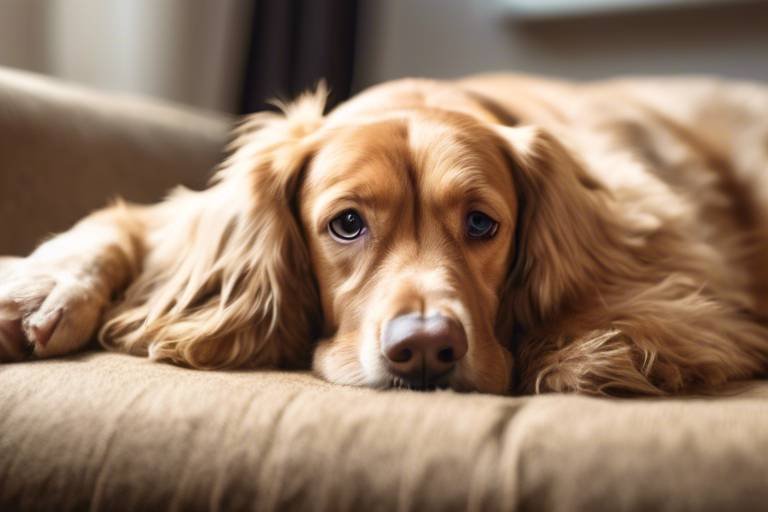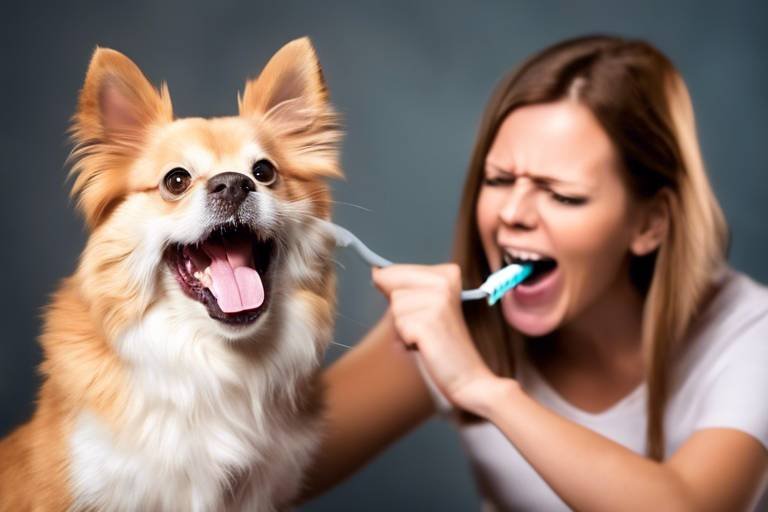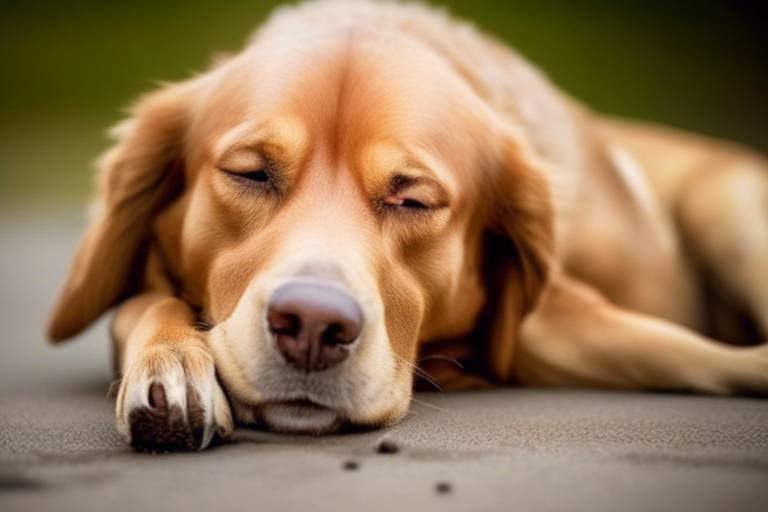Tips for Keeping Your Pet’s Weight in Check
As a loving pet owner, you want the best for your furry friend, and that includes maintaining a healthy weight. Just like humans, pets can struggle with obesity, which can lead to a myriad of health issues such as diabetes, joint problems, and heart disease. The good news is that managing your pet's weight doesn't have to be a daunting task. With a little knowledge and some practical strategies, you can help your pet achieve and maintain a healthy weight. So, let’s dive into some essential tips that will not only keep your pet fit but also enhance their overall quality of life.
Pet obesity is an escalating issue that affects millions of cats and dogs worldwide. Did you know that according to the Association for Pet Obesity Prevention, approximately 60% of cats and 56% of dogs are classified as overweight or obese? This alarming statistic underscores the need for effective weight management strategies. The causes of obesity can vary widely, from overfeeding and lack of exercise to genetic predispositions. Recognizing the risks associated with obesity is crucial, as it can lead to severe health complications, including arthritis, respiratory problems, and even a shortened lifespan. By understanding the factors contributing to pet obesity, you can become an advocate for your pet’s health.
Identifying a healthy weight for your pet is essential for their well-being. You might wonder, "How do I know if my pet is at a healthy weight?" One effective way to assess your pet's condition is by using the Body Condition Scoring (BCS) system. This system evaluates your pet's body shape and fat distribution, providing a clear picture of their health status. In the following sections, we’ll explore how to use this scoring system and what physical signs indicate a healthy weight.
The Body Condition Scoring system is a straightforward tool that helps pet owners evaluate their pets' weight. The scale typically ranges from 1 to 9, where 1 indicates an extremely underweight pet and 9 represents an obese pet. A score of 4 to 5 is considered ideal. To apply this scoring system, gently feel your pet's ribs; they should be easily felt but not visible. Additionally, look for a noticeable waist when viewed from above. Understanding this scoring system can empower you to make informed decisions about your pet's nutrition and exercise.
Visual inspection is another effective way to assess your pet’s weight. Here are some simple guidelines to help you determine if your pet is underweight, overweight, or at a healthy weight:
- Underweight: Ribs are easily visible, and there is minimal fat covering.
- Healthy Weight: Ribs can be felt with a slight layer of fat, and there is a noticeable waist.
- Overweight: Ribs are difficult to feel, and there is no waistline visible.
Accurate weight measurement is crucial for effective weight management. You can weigh your pet at home using a digital scale. Simply weigh yourself first, then weigh yourself holding your pet, and subtract your weight from the total. Alternatively, you can visit your veterinarian for a professional weigh-in. Regularly tracking your pet's weight can help you identify trends and make necessary adjustments to their diet and exercise routine.
Understanding the factors that contribute to weight gain in pets is vital for prevention. Common causes include:
- Dietary Habits: Overfeeding or providing high-calorie treats can lead to weight gain.
- Lack of Exercise: Many pets do not get enough physical activity, especially in a sedentary lifestyle.
- Genetic Predispositions: Some breeds are more prone to obesity than others.
A balanced diet is key to maintaining a healthy weight for your pet. It’s essential to provide them with the right mix of nutrients, including proteins, fats, carbohydrates, vitamins, and minerals. Portion control is also critical; even the healthiest food can contribute to weight gain if given in excessive amounts. Opt for high-quality pet food that meets the specific needs of your pet's age, size, and activity level. Remember, your pet’s diet is the foundation of their health!
Selecting appropriate pet food can significantly impact weight management. When reading labels, look for high-quality protein sources as the first ingredient and avoid foods with excessive fillers. Understanding ingredients can be daunting, but focusing on whole foods and avoiding artificial additives can lead to better health for your pet. Always consult with your veterinarian for recommendations tailored to your pet's unique needs.
Some pet owners prefer homemade diets for their pets. While this can be a great way to ensure quality ingredients, it’s crucial to prepare balanced meals. Consider including a variety of protein sources, vegetables, and grains, while avoiding common pitfalls like excessive fat or missing essential nutrients. Consulting with a veterinary nutritionist can help you create a balanced homemade diet that meets your pet's needs.
Regular physical activity is vital for weight control. Just like us, pets need exercise to stay healthy and fit. Whether it’s a brisk walk, a game of fetch, or interactive play, integrating exercise into your pet’s daily routine can be fun and rewarding. Different pets have different exercise requirements, so it’s essential to tailor activities to suit your pet's preferences and abilities.
Dogs thrive on active play. Engaging activities such as:
- Fetch
- Agility training
- Swimming
not only help burn calories but also strengthen the bond between you and your dog. Remember to keep it fun and varied to keep your dog’s interest piqued!
Cats also need exercise, albeit in different forms. Consider activities like:
- Interactive toys
- Laser pointers
- Feather wands
These types of play encourage movement and can keep your cat healthy and engaged. A little creativity goes a long way in ensuring your feline friend stays active!
Regularly tracking your pet’s weight and health is essential for effective management. Keeping a journal of your pet’s weight, dietary changes, and exercise routines can help you monitor progress and make necessary adjustments as needed. If you notice your pet is not losing weight or is gaining, it might be time to reassess their diet and exercise plan.
Establishing achievable weight loss or maintenance goals is important. Aim for gradual weight loss, typically around 1-2% of your pet's body weight per week. This ensures that the weight loss is sustainable and healthy.
Your veterinarian is an invaluable resource for weight management. Regular check-ups can help you stay on track and provide professional advice tailored to your pet's specific needs. Don’t hesitate to reach out for guidance on diet, exercise, and overall health!
Q: How can I tell if my pet is overweight?
A: You can assess your pet's weight by using the Body Condition Scoring system and visually inspecting their shape. If you can’t easily feel their ribs or see a waist, they may be overweight.
Q: What should I do if my pet is overweight?
A: Consult your veterinarian to create a tailored plan that includes dietary changes and increased exercise.
Q: Can I give my pet treats while managing their weight?
A: Yes, but choose low-calorie treats and be mindful of portion sizes to avoid exceeding their daily caloric needs.
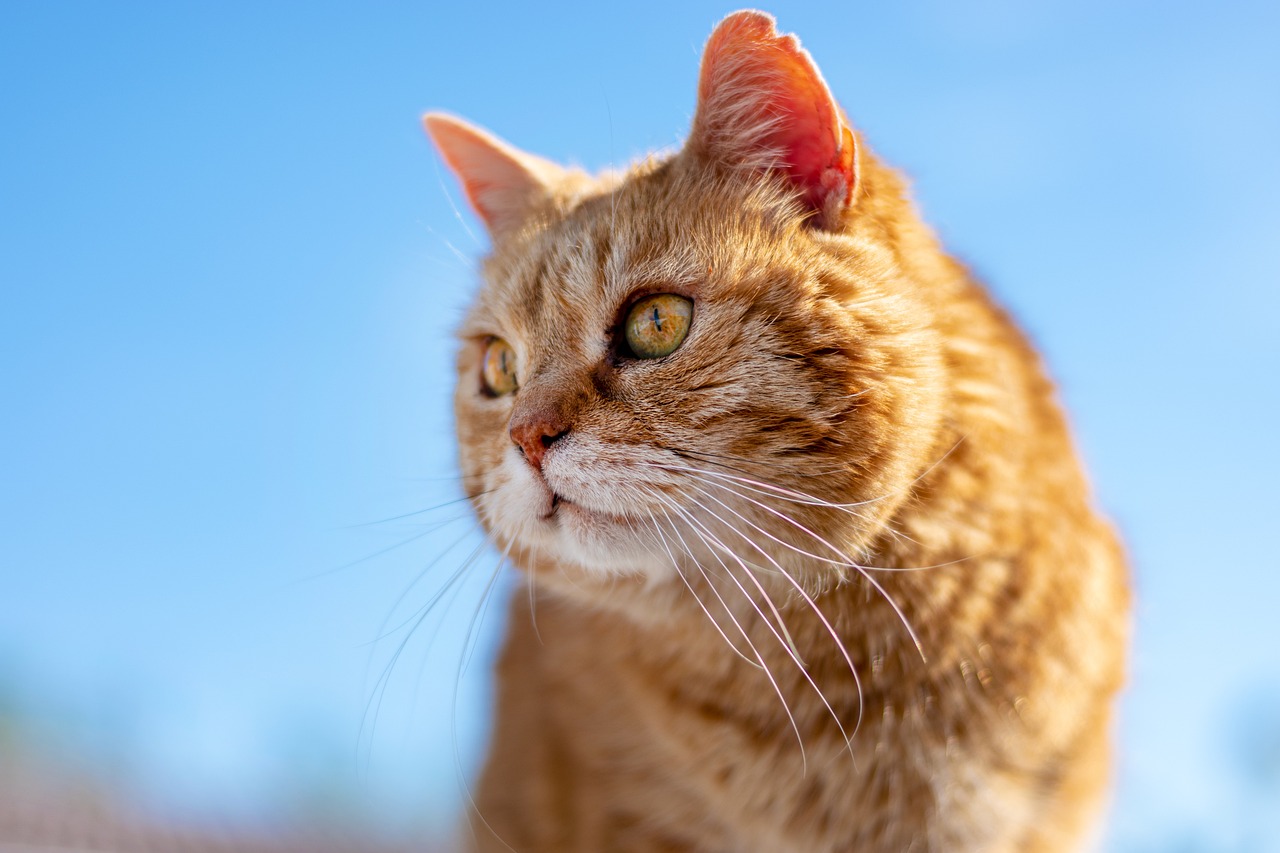
Understanding Pet Obesity
Pet obesity is not just a cosmetic issue; it’s a serious health concern that affects millions of furry friends worldwide. Did you know that approximately 60% of cats and 56% of dogs in the United States are classified as overweight or obese? This alarming statistic highlights the urgent need for pet owners to take proactive steps in managing their pets' weight. Obesity can lead to a myriad of health problems, including diabetes, heart disease, and joint issues, which can significantly shorten your pet's lifespan and diminish their quality of life.
So, what causes pet obesity? There are several contributing factors, and understanding them is crucial for prevention. A common culprit is overfeeding. Many pet owners often misinterpret their pet's begging behavior as a sign of hunger, leading to excessive treat-giving and portion sizes. Additionally, the type of food matters; many commercially available pet foods are high in calories and low in nutritional value. Another significant factor is lack of exercise. Pets, especially dogs, need regular physical activity to maintain a healthy weight, yet many owners lead busy lives that don’t allow for adequate playtime.
Furthermore, genetics can play a role in your pet's propensity to gain weight. Some breeds are more prone to obesity due to their metabolism and body structure. For instance, breeds like Beagles and Bulldogs are known to struggle with weight management. It's essential to recognize these factors and actively engage in your pet's health journey.
To further illustrate the implications of pet obesity, consider the following table that outlines the potential health risks associated with excess weight:
| Health Risk | Description |
|---|---|
| Diabetes | Obesity increases the risk of insulin resistance, leading to diabetes. |
| Heart Disease | Extra weight puts strain on the heart, increasing the risk of cardiovascular problems. |
| Joint Issues | Excess weight can lead to arthritis and other joint problems, making mobility difficult. |
| Respiratory Problems | Obese pets may struggle with breathing, especially during physical activity. |
In conclusion, understanding pet obesity is the first step towards a healthier lifestyle for your furry companions. By recognizing the causes, risks, and statistics surrounding this issue, you can take informed actions to manage your pet's weight effectively. Remember, a healthy pet is a happy pet, and your proactive measures can make all the difference in their well-being.
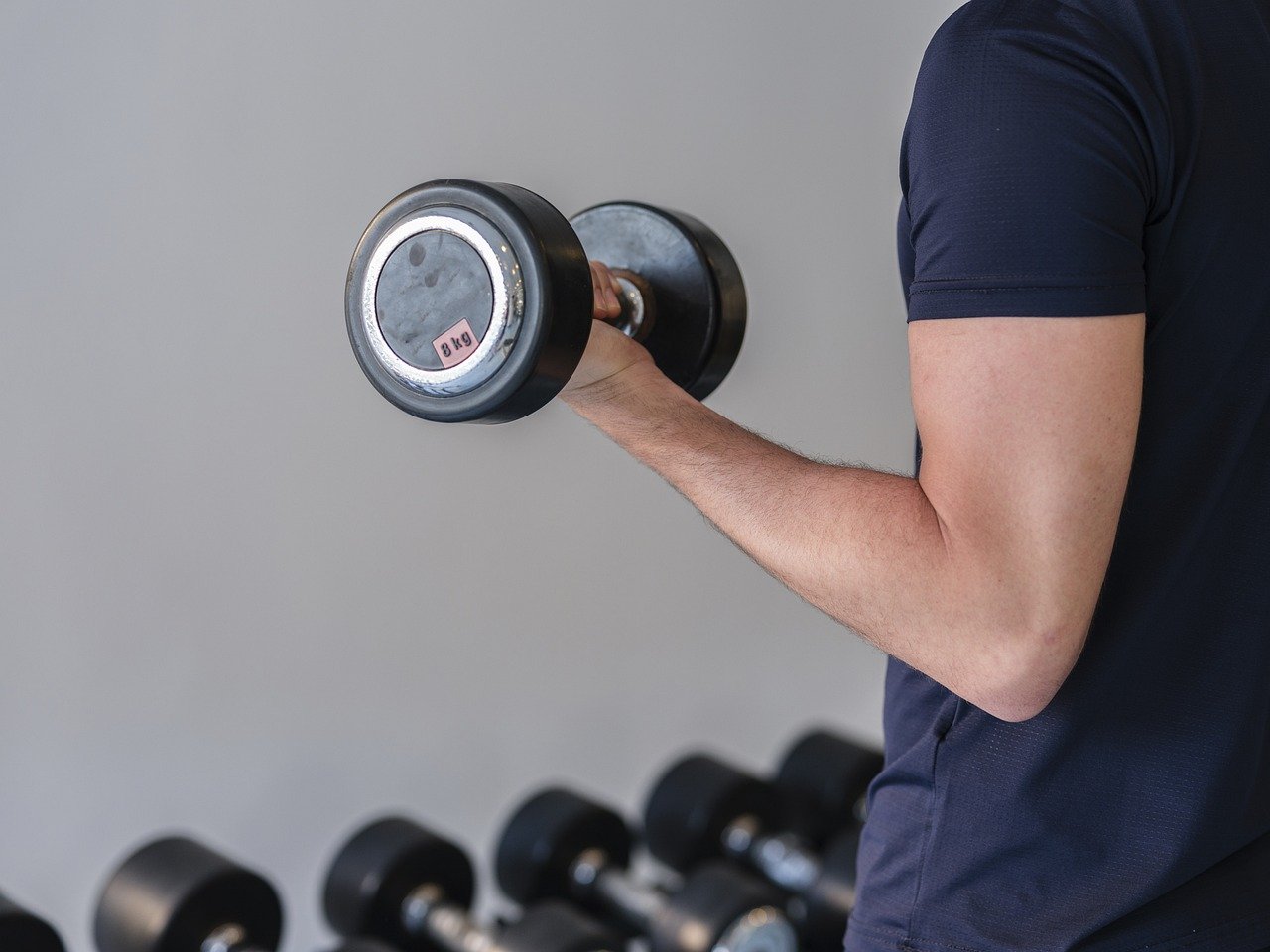
Recognizing Healthy Weight Indicators
When it comes to ensuring our beloved pets lead healthy lives, recognizing healthy weight indicators is crucial. Just like humans, pets come in all shapes and sizes, and what might be "normal" for one could be a cause for concern for another. So, how do you determine if your furry friend is at a healthy weight? It requires a bit of observation and understanding of their body condition.
First and foremost, the Body Condition Scoring (BCS) system is a reliable tool that pet owners can use to assess their pets' weight. This system typically ranges from 1 to 9, with 1 being extremely underweight and 9 being extremely overweight. A score of 5 is generally considered ideal. By palpating your pet's ribs, you should be able to feel them without excessive pressure. Their waist should be visible when viewed from above, and their abdomen should tuck up when viewed from the side. This visual and tactile evaluation can give you a good indication of whether your pet is in the healthy range.
The BCS system is not just a number; it's a comprehensive method to evaluate your pet’s overall health. Here’s a brief breakdown of the scoring scale:
| Score | Description |
|---|---|
| 1 | Very thin; ribs, spine, and bones are easily visible. |
| 3 | Underweight; ribs are visible, but there is some fat covering. |
| 5 | Ideal weight; ribs can be felt without excess fat. |
| 7 | Overweight; ribs can be felt with difficulty, and there’s some fat covering. |
| 9 | Obese; ribs are not palpable due to excessive fat. |
Another key aspect of recognizing healthy weight indicators is to visually assess your pet's shape. For instance, when you look at your dog or cat from above, you should see a noticeable waistline. If they appear more oval or rounded, it could be a sign that they are carrying extra weight. Similarly, when viewed from the side, a healthy pet should have a slight abdominal tuck. This visual inspection, combined with the BCS, provides a comprehensive picture of your pet's weight status.
In addition to visual assessments, regularly weighing your pet is a practical way to monitor their weight. You can use a standard bathroom scale by weighing yourself first, then weighing yourself while holding your pet and calculating the difference. Alternatively, many veterinary clinics offer weight checks, which can be a great opportunity to get professional advice on your pet’s weight management. Keeping a log of your pet's weight will help you notice any trends, whether they are gaining or losing weight over time.
In conclusion, recognizing healthy weight indicators in your pet involves a combination of visual assessments, the Body Condition Scoring system, and regular weight measurements. By staying vigilant and proactive, you can ensure that your furry companion maintains a healthy weight, leading to a happier and longer life.
- How often should I weigh my pet? It's recommended to weigh your pet every month or every other month, especially if you are monitoring weight loss or gain.
- What should I do if my pet is overweight? Consult your veterinarian for a tailored weight loss plan that includes a balanced diet and exercise.
- Can I use the same BCS system for all pets? While the BCS system is a useful guideline, it's important to remember that different breeds may have different ideal weights.
Body Condition Scoring System
The Body Condition Scoring (BCS) system is an invaluable tool for pet owners who want to keep their furry friends healthy and happy. This scoring system helps you evaluate your pet's weight and overall body condition, allowing for a more informed approach to weight management. The BCS typically ranges from 1 to 9, with each score corresponding to a specific body condition. Understanding this scale can help you make better decisions regarding your pet's diet and exercise regimen.
So, how does this scoring system work? Well, each score is associated with visual and physical characteristics of your pet. For instance, a score of 1 indicates that your pet is emaciated, showing pronounced bones and little to no body fat. On the other end of the scale, a score of 9 signifies that your pet is obese, with excessive fat covering the ribs and a noticeable abdominal distension. Ideally, you want your pet to fall within the range of 4 to 5, which represents a healthy weight where ribs can be felt but not seen, and there is a slight waist when viewed from above.
To make it easier, here’s a simple breakdown of the BCS:
| Score | Condition | Physical Characteristics |
|---|---|---|
| 1 | Emaciated | Prominent bones, no fat |
| 2 | Very Thin | Ribs easily visible, little fat |
| 3 | Thin | Ribs felt with slight pressure, minimal fat |
| 4 | Ideal | Ribs easily felt, slight waist |
| 5 | Overweight | Ribs not visible, waist not defined |
| 6 | Obese | Ribs difficult to feel, fat covering |
| 7 | Very Obese | Excessive fat, noticeable abdominal distension |
| 8 | Severely Obese | Extreme fat, unable to feel ribs |
| 9 | Morbidly Obese | Severe fat deposits, cannot feel ribs |
By utilizing the Body Condition Scoring system, you can regularly assess your pet's weight and make adjustments as necessary. It’s like having a personal trainer for your pet, guiding you on how to maintain their ideal body condition. Regular evaluations can help you catch potential weight issues before they become serious health problems. Just remember, it's not just about the number on the scale; it’s about how your pet feels and functions in their daily life.
So, next time you’re cuddling with your pet or watching them play, take a moment to assess their body condition. Are they moving with ease? Can you feel their ribs? These little observations can make a huge difference in their overall health. If you’re ever unsure, don’t hesitate to consult your veterinarian for professional guidance on your pet’s body condition and weight management strategies.
- How often should I check my pet's body condition? It's recommended to assess your pet's body condition at least once a month, especially if they are on a weight management plan.
- Can I use the BCS for all types of pets? The BCS is primarily designed for dogs and cats, but similar systems can be adapted for other pets.
- What should I do if my pet is overweight? Consult with your veterinarian to create a tailored diet and exercise plan for your pet.
Assessing Your Pet’s Shape
Understanding your pet’s shape is crucial for determining whether they are at a healthy weight. Just like we wouldn’t want to wear clothes that are too tight or too loose, our furry friends deserve to feel comfortable in their own skin—or fur, in this case! So, how do we assess this? Start by visually inspecting your pet’s body. Look for the waistline, which should be easily identifiable when viewed from above. If your pet has a pronounced belly that hangs down, it might be a sign of excess weight.
Next, feel around your pet’s ribs. You should be able to feel them without too much pressure. If you have to press hard to feel those ribs, your pet may be overweight. On the flip side, if the ribs are protruding too much, they might be underweight. It's all about finding that sweet spot! To help you visualize this, here’s a simple body condition scoring guide:
| Score | Description |
|---|---|
| 1 | Very thin, ribs visible, no body fat |
| 2 | Underweight, ribs easily felt, minimal fat |
| 3 | Ideal weight, ribs felt with a slight fat cover |
| 4 | Overweight, ribs difficult to feel, fat covering |
| 5 | Obese, ribs not palpable, excessive fat |
In addition to these visual and physical assessments, consider your pet’s overall activity level. A pet that is energetic and playful is likely to be healthier than one that is lethargic and disinterested in play. If you notice your pet panting excessively during play or showing reluctance to engage, it may be time to reassess their weight and shape.
Remember, regular check-ups with your veterinarian can provide professional insight into your pet’s health and weight. They can offer tailored advice based on your pet's breed, age, and lifestyle. So, keep an eye on those furry friends and ensure they’re not just looking good, but feeling great too!
- What should I do if my pet is overweight? Start by consulting your veterinarian for a tailored weight loss plan, which may include diet changes and increased exercise.
- How often should I weigh my pet? It's a good idea to weigh your pet monthly to monitor any changes in their weight.
- Can I feed my pet homemade food? Yes, but ensure it’s balanced and meets all nutritional needs. Consulting with a vet is recommended.
- What are some easy exercises I can do with my pet? Simple activities like walking, playing fetch, or even engaging in interactive toys can be great for both dogs and cats.
Weight Measurement Techniques
Measuring your pet's weight accurately is a crucial step in managing their overall health. Just like humans, pets can fluctuate in weight, and keeping tabs on their numbers can help you catch any potential issues early. But how do you go about weighing your furry friend? There are several techniques you can use, whether you're at home or visiting the vet.
At home, one of the simplest methods is to use a standard bathroom scale. If your pet is small enough, you can weigh yourself first and then weigh yourself while holding your pet. By subtracting the first weight from the second, you’ll get your pet's weight. For larger pets, you might need to invest in a pet-specific scale, which can provide more accurate readings. Some pet stores and veterinary clinics also have scales available for public use, making it easy to check your pet’s weight regularly.
When weighing your pet, it’s important to keep them calm and still. You may need to practice a bit to get them comfortable with the process. Here are some tips to help you get an accurate reading:
- Choose the Right Time: Weigh your pet at the same time of day, preferably in the morning before they eat or drink.
- Keep It Consistent: Use the same scale each time to avoid discrepancies in readings.
- Stay Calm: If your pet is anxious, it might affect their weight. Try to make the experience as stress-free as possible.
For more precise measurements, consider using a veterinary scale during your regular check-ups. Your vet will not only provide an accurate weight but can also help track your pet's weight over time and identify any concerning trends. This is particularly important for pets that are on a weight loss or gain program.
Finally, remember that weight is just one piece of the puzzle. While monitoring your pet's weight is essential, it's equally important to consider their overall health and body condition. Regular check-ups with your veterinarian can help ensure that your pet is not only at a healthy weight but also thriving in other aspects of their health.
Common Causes of Weight Gain
Understanding the in pets is essential for effective weight management. Just like humans, pets can pack on the pounds for various reasons. It’s not just about overindulgence; several factors contribute to your furry friend’s expanding waistline. One of the primary culprits is dietary habits. Many pet owners unknowingly overfeed their pets, often treating them with too many snacks or not measuring their food portions accurately. This can lead to a caloric surplus, where the calories consumed exceed the calories burned.
Another significant factor is the lack of exercise. Pets, especially those living in urban environments, may not get enough physical activity. Dogs, for instance, need regular walks and playtime, while cats require opportunities to engage in hunting-like behaviors. If your pet is lounging around all day, it’s no surprise that weight gain can occur. Additionally, certain genetic predispositions can make some pets more prone to obesity than others. Breeds like Labrador Retrievers and Beagles are known for their love of food and can easily become overweight if not properly managed.
It’s also important to consider age as a factor. As pets grow older, their metabolism slows down, and they may become less active. This natural aging process can contribute to weight gain if their diet and exercise routines are not adjusted accordingly. Moreover, some pets may develop health issues such as hypothyroidism, which can lead to weight gain. It’s crucial to consult with your veterinarian to rule out any underlying health problems that could be affecting your pet’s weight.
Lastly, environmental factors play a role in your pet's weight. Stress, boredom, and even the presence of other pets can influence eating habits and activity levels. For instance, a pet who is anxious might turn to food for comfort, leading to unnecessary weight gain. Understanding these factors can help you create a more effective weight management plan for your beloved companion.
In summary, the journey to maintaining a healthy weight for your pet involves recognizing these common causes of weight gain. By being aware of dietary habits, exercise needs, genetic predispositions, age-related changes, health issues, and environmental influences, you can take proactive steps to ensure your pet stays healthy and happy.
- How can I tell if my pet is overweight? Look for signs such as difficulty feeling their ribs, a lack of a defined waist, and decreased energy levels.
- What should I do if my pet is overweight? Consult your veterinarian for a tailored weight loss plan that includes dietary changes and an exercise regimen.
- Can I give my pet treats while managing their weight? Yes, but opt for healthy treats and consider reducing their regular food portions accordingly.
- How often should I exercise my pet? Aim for at least 30 minutes of exercise daily, but this can vary based on your pet's breed and energy level.

Creating a Balanced Diet
When it comes to keeping your furry friend in tip-top shape, is absolutely essential. Just like us, pets need a variety of nutrients to thrive, and it's our job as pet owners to ensure they're getting the right mix. Think of your pet’s diet as a well-orchestrated symphony, where each nutrient plays its part to create a harmonious and healthy life. A balanced diet not only helps in maintaining a healthy weight but also contributes to overall well-being, energy levels, and longevity.
First off, let’s talk about the essential nutrients your pet needs. It’s not just about filling their bowl with food; it's about choosing the right food that provides a comprehensive range of nutrients. Here’s a quick rundown of what to look for:
- Proteins: These are the building blocks of your pet's body, essential for growth, maintenance, and overall health.
- Fats: Healthy fats provide energy and support cell function. They also help in nutrient absorption.
- Carbohydrates: While not essential, carbs provide a quick source of energy and help with digestion.
- Vitamins and Minerals: These are crucial for numerous bodily functions, from bone health to immune support.
Now, you might be wondering how to manage portion control. Overfeeding is a common pitfall among pet owners. To avoid this, always refer to the feeding guidelines on pet food packaging, which typically provide a recommended amount based on your pet's weight and activity level. However, these are just guidelines! Every pet is unique, and you may need to adjust the portions based on your pet's specific needs. Keep an eye on their body condition and adjust accordingly.
Choosing high-quality pet food is another vital aspect of creating a balanced diet. Not all pet foods are created equal, so you’ll want to do your research. Look for products that list real meat as the first ingredient and avoid those with fillers and artificial additives. Reading labels can feel a bit like deciphering a foreign language, but once you get the hang of it, it’s pretty straightforward. If you're unsure, don’t hesitate to consult your veterinarian for recommendations.
For those adventurous pet owners considering a homemade diet, there are a few things to keep in mind. While preparing meals at home can be a fun way to bond with your pet, it’s crucial to ensure that the meals are nutritionally balanced. A common pitfall is not including all necessary nutrients, which can lead to deficiencies. To avoid this, you can follow recipes from reliable sources or consult a veterinary nutritionist. Remember, just because something is healthy for you doesn’t mean it’s healthy for your pet, so tread carefully!
In summary, creating a balanced diet for your pet is about understanding their specific needs and providing a variety of nutrients. Whether you opt for commercial pet food or a homemade diet, the goal is to keep your pet healthy, happy, and thriving. A little effort in meal planning can go a long way in enhancing your pet's quality of life!
1. How do I know if my pet is getting a balanced diet?
Monitor their energy levels, coat condition, and overall health. If you have concerns, consulting a veterinarian can provide clarity.
2. Can I mix homemade food with commercial pet food?
Yes, but it's important to ensure that the combined diet remains balanced and meets your pet's nutritional needs.
3. How often should I feed my pet?
This varies by age and species. Generally, adult dogs are fed twice a day, while cats can be free-fed or fed twice as well. Always check with your vet for personalized advice.
4. Are there specific ingredients I should avoid in pet food?
Yes, avoid foods with artificial preservatives, colors, and fillers like corn and soy. Always aim for high-quality, natural ingredients.
Choosing the Right Pet Food
When it comes to managing your pet's weight, one of the most significant factors is the food you choose for them. Picking the right pet food can feel overwhelming with the myriad of options available on the market. However, understanding how to read labels and what ingredients to look for can simplify this process immensely. First and foremost, always check for a statement of nutritional adequacy on the packaging. This indicates that the food meets the standards set by the Association of American Feed Control Officials (AAFCO).
Next, you should prioritize high-quality protein sources as the primary ingredient. This is crucial because proteins are essential for muscle maintenance and overall health. Look for specific meat names, such as chicken, beef, or lamb, rather than generic terms like “meat by-products.” Additionally, be wary of foods that list fillers such as corn and soy as primary ingredients, as these can contribute to weight gain without providing substantial nutritional value.
Another essential aspect to consider is the caloric content of the food. You want to ensure that your pet is receiving the right amount of calories based on their age, size, and activity level. It’s also a good idea to consult your veterinarian for recommendations tailored specifically to your pet’s needs. They can help you determine the appropriate caloric intake and suggest brands that align with those requirements.
When evaluating pet food, it can be helpful to familiarize yourself with the ingredients list. A quick rule of thumb is to choose foods that list whole ingredients. Here’s a simple breakdown of what to look for:
- Whole meats: Chicken, beef, fish, etc.
- Whole grains: Brown rice, oats, etc. (if your pet is not grain-sensitive)
- Vegetables: Carrots, peas, and other nutrient-rich options.
- Healthy fats: Omega-3 and Omega-6 fatty acids for a shiny coat.
For those considering homemade diets, it's crucial to ensure that the meals are balanced and meet your pet's nutritional needs. Consulting with a veterinarian or a pet nutritionist can help you avoid common pitfalls that might lead to nutritional imbalances.
Lastly, remember that transitioning to a new food should be done gradually over a week or so. This helps prevent digestive upset and allows your pet to adjust to the new diet. Mix the new food with the old food, slowly increasing the proportion of the new food each day until your pet is fully transitioned.
By taking the time to choose the right pet food, you are not just feeding your furry companion; you are investing in their health and longevity. A well-balanced diet tailored to your pet’s specific needs will not only help in maintaining a healthy weight but will also contribute to their overall happiness and vitality.
Q: How can I tell if my pet is overweight?
A: Look for signs such as difficulty in feeling their ribs, a lack of a defined waist, and decreased energy levels. Regular vet check-ups can also provide a professional assessment.
Q: Is it safe to feed my pet homemade food?
A: Yes, but it’s crucial to ensure that the meals are balanced. Consulting with a vet or pet nutritionist is recommended to create a proper diet plan.
Q: How often should I feed my pet?
A: It depends on your pet's age and activity level. Generally, adult pets can be fed twice a day, while puppies and kittens may require more frequent meals.
Q: Can treats affect my pet's weight?
A: Absolutely! Treats can add extra calories to your pet's diet. It's essential to choose healthy treats and account for them in their daily caloric intake.
Homemade Diet Considerations
Creating a homemade diet for your pet can be a rewarding experience, but it comes with its own set of challenges. Many pet owners opt for homemade meals to ensure their furry friends receive fresh, wholesome ingredients without the additives often found in commercial pet foods. However, it's crucial to approach this with care. You need to ensure that your pet's diet is balanced and meets all their nutritional requirements. After all, just like humans, pets need a variety of nutrients to thrive.
One of the first steps in planning a homemade diet is to research the essential nutrients that your pet needs. Dogs and cats have different dietary requirements, so it's important to tailor the meals accordingly. For instance, dogs are omnivores and can thrive on a mix of proteins, grains, and vegetables, while cats are obligate carnivores and require a higher protein intake. Here are some vital components to consider:
- Proteins: Lean meats, fish, and eggs are excellent sources of protein.
- Carbohydrates: Brown rice, oats, and sweet potatoes can provide necessary energy.
- Fats: Healthy fats from fish oil or flaxseed oil are important for skin and coat health.
- Vitamins and Minerals: Incorporate vegetables like carrots, peas, and spinach, and consider supplements if needed.
When preparing meals, be mindful of portion sizes. Just because a meal is homemade doesn’t mean it’s free from excess calories. It's easy to overestimate how much your pet should eat, especially when you see those adorable pleading eyes! A good rule of thumb is to consult with your veterinarian to determine the appropriate caloric intake for your pet based on their weight, age, and activity level.
Moreover, it’s essential to avoid certain ingredients that can be harmful or even toxic to pets. Foods like onions, garlic, chocolate, grapes, and raisins should never be included in your pet's meals. Keeping a list of safe and unsafe foods can be beneficial as you navigate the world of homemade pet diets. Here’s a quick table for reference:
| Safe Foods | Unsafe Foods |
|---|---|
| Chicken, turkey, and beef | Onions and garlic |
| Carrots and peas | Chocolate |
| Rice and oats | Grapes and raisins |
| Fish (like salmon) | Avocado |
Finally, consistency is key. Once you establish a diet, try to stick to it to avoid digestive issues. Monitor your pet's weight and overall health, and don’t hesitate to make adjustments if necessary. If you notice any adverse reactions or changes in behavior, consult your veterinarian immediately. They can help you fine-tune the diet and ensure your pet is getting everything they need to stay healthy and happy.
Q: Can I feed my pet only homemade food?
A: While homemade food can be healthy, it's important to ensure it is balanced and meets all nutritional needs. Consult with your veterinarian for guidance.
Q: How can I ensure my homemade pet food is balanced?
A: Research essential nutrients for your pet's species and age, and consider working with a veterinary nutritionist to create a balanced meal plan.
Q: Are there any common mistakes to avoid when making homemade pet food?
A: Yes, common mistakes include not including enough protein, using harmful ingredients, or overfeeding. Always double-check your recipes!
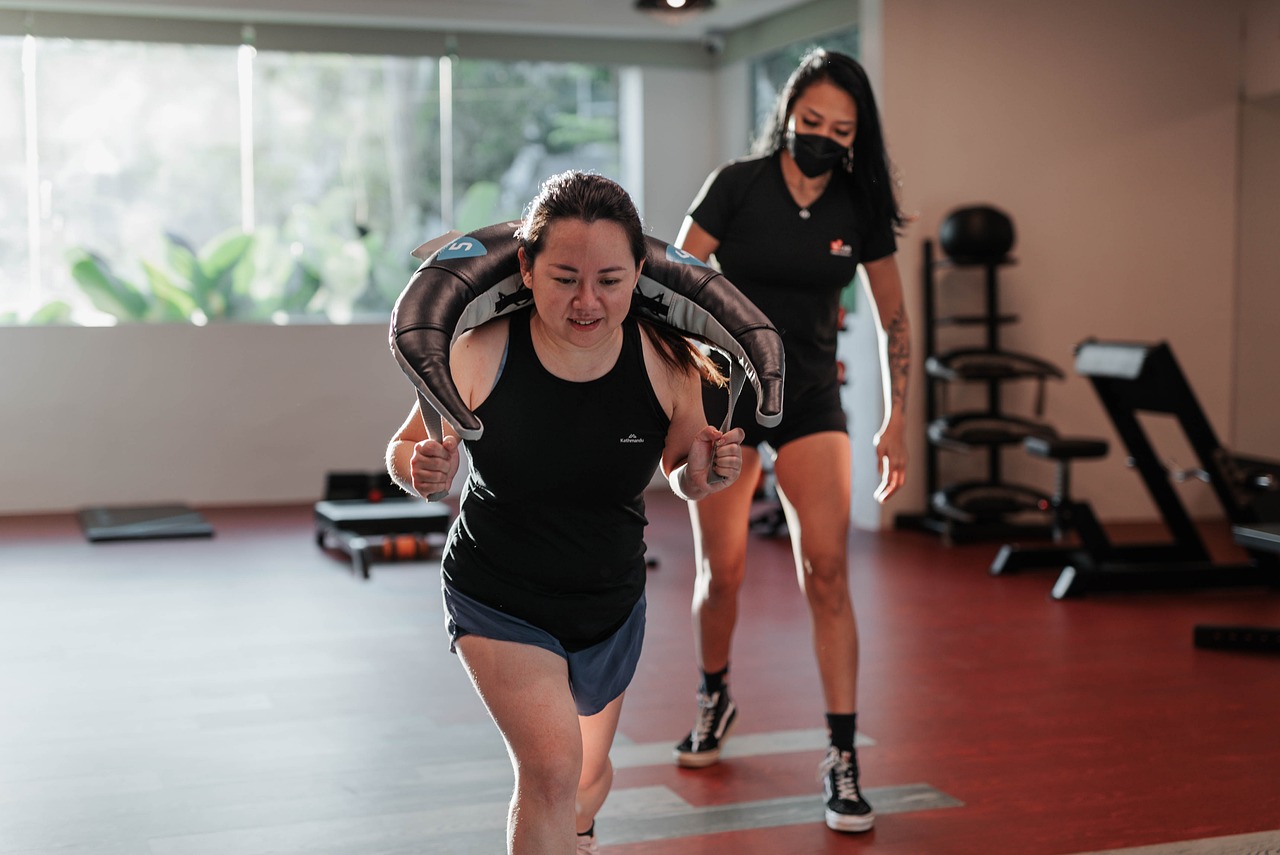
Incorporating Exercise into Daily Routine
When it comes to keeping your pet healthy, exercise is just as important as a balanced diet. Think of it as the two sides of the same coin; one can't thrive without the other. Incorporating regular physical activity into your pet's daily routine not only helps in maintaining a healthy weight but also enhances their overall well-being. Just like us, pets need to move around to stay fit and happy. So, how can you make exercise a fun and engaging part of your furry friend's day?
First off, it’s essential to understand that different pets have different exercise needs. For instance, a high-energy dog may require a good hour of vigorous play, while a more laid-back cat might be satisfied with a few short bursts of playtime throughout the day. The key is to tailor the exercise routine to your pet's individual energy levels and preferences. You might find that your pet enjoys a variety of activities, so don’t hesitate to mix things up!
One great way to incorporate exercise is by scheduling daily walks with your dog. Not only does this provide them with physical activity, but it also offers mental stimulation from all the new sights and smells. Aim for at least 30 minutes of walking each day. If you have a busy schedule, consider breaking it up into two or three shorter walks. Your dog will appreciate the time spent together, and you'll both benefit from the fresh air!
For cats, playtime can be a bit different. Cats are natural hunters, so engaging them in interactive play can stimulate their instincts. Use toys that mimic prey, such as feather wands or laser pointers, to encourage your cat to chase and pounce. Just a few minutes of this kind of play can provide an excellent workout for your feline friend. Aim for at least 15 minutes of active play a couple of times a day to keep them fit and entertained.
Here are some additional ideas to keep your pet active:
- Fetch Games: A classic game of fetch can be great for dogs, especially in an open space.
- Obstacle Courses: Set up a mini agility course in your backyard or living room using household items.
- Playdates: Arrange playdates with other pets to encourage socialization and physical activity.
- Swimming: If your dog loves water, swimming is a fantastic low-impact exercise option.
Incorporating these activities into your pet's routine can be a game-changer. Remember, the goal is to make exercise enjoyable, not a chore. Think of it as quality bonding time with your pet. You’ll find that both of you will look forward to these moments together. And the best part? A well-exercised pet is often a well-behaved pet!
Lastly, don’t forget to monitor your pet’s progress. Keeping track of their energy levels and weight will help you adjust the exercise routine as necessary. If you notice your pet is losing interest or seems tired, it might be time to switch things up. Just like us, pets can get bored with the same old routine!
Q: How much exercise does my pet need?
A: It varies by species and breed. Generally, dogs need at least 30 minutes to 2 hours of exercise daily, while cats benefit from 15-30 minutes of playtime.
Q: What if my pet is overweight?
A: Consult your veterinarian for a tailored exercise and diet plan. Start slowly and gradually increase activity levels.
Q: Can I exercise my pet indoors?
A: Absolutely! Indoor games like hide-and-seek, using staircases for exercise, or interactive toys can keep your pet active.
Q: How do I know if my pet is getting enough exercise?
A: Look for signs like a healthy weight, energy levels, and good behavior. If they seem restless or destructive, they may need more activity.
Fun Activities for Dogs
Keeping your dog active is crucial for their overall health and well-being. Just like us, dogs need regular exercise to maintain a healthy weight and prevent obesity-related issues. But let’s be honest, exercise doesn’t have to be a chore! It can be a time for fun and bonding between you and your furry friend. So, what are some engaging activities that will keep your pup happily moving? Here are a few ideas that are sure to get tails wagging!
First off, nothing beats a good old-fashioned game of fetch. This classic activity not only provides excellent cardiovascular exercise but also stimulates your dog’s mind. You can take it to the next level by incorporating different toys like frisbees or balls of varying sizes. If you have a large yard or access to a park, let your dog run freely while you throw the toy. Just remember to take breaks, especially on hot days, to keep your pup hydrated!
Another fun activity is agility training. Setting up an agility course in your backyard or at a local park can be a fantastic way to challenge your dog physically and mentally. Use items like cones, tunnels, and jumps to create a mini obstacle course. This not only keeps them fit but also enhances their coordination and confidence. Plus, it’s a great way for you to bond with your dog as you work together to navigate the course.
Let’s not forget about socialization! Taking your dog to a dog park can be a great way for them to interact with other dogs and burn off some energy. Running around with their furry friends can be incredibly stimulating and helps improve their social skills. Just be sure to supervise their playtime to ensure everyone is getting along.
For those days when you can’t get outside, consider indoor activities. You can play hide and seek by hiding treats around the house and encouraging your dog to sniff them out. This not only keeps them moving but also engages their natural hunting instincts. Alternatively, tug-of-war is a fantastic way to get them to exert energy while also having fun. Just make sure to use a sturdy toy and establish some ground rules to keep the game safe and enjoyable.
Lastly, don’t underestimate the power of a good walk. A simple stroll around the neighborhood can be a great way to explore new sights and smells. To make walks more exciting, try varying your route or incorporating short bursts of jogging or running. This keeps your dog engaged and can help them burn more calories.
In conclusion, keeping your dog active doesn’t have to be a mundane task. With a bit of creativity and enthusiasm, you can turn exercise into an enjoyable experience for both of you. Remember, the key is to find activities that you both love, ensuring that exercise becomes a regular, fun part of your routine!
Q: How much exercise does my dog need?
A: The amount of exercise varies by breed and age, but most dogs require at least 30 minutes to 2 hours of physical activity each day.
Q: What if my dog is overweight?
A: Consult your veterinarian for a tailored exercise and diet plan. Gradually increase their activity level to avoid injury.
Q: Can I exercise my dog indoors?
A: Absolutely! Activities like hide and seek, indoor fetch, and tug-of-war are great for keeping your dog active indoors.
Q: How do I know if my dog is getting enough exercise?
A: Signs of a well-exercised dog include a calm demeanor at home, a healthy weight, and a willingness to engage in play.
Stimulating Play for Cats
When it comes to keeping our feline friends fit and engaged, stimulating play is essential. Cats are natural hunters, and their playful instincts drive them to pounce, chase, and explore. However, many indoor cats can become bored and sedentary, leading to weight gain and health issues. So, how can we keep our cats entertained and active? The key is to incorporate a variety of engaging activities that cater to their unique personalities and instincts.
First off, consider investing in some interactive toys. Toys that mimic the movements of prey, such as feather wands or laser pointers, can ignite your cat's hunting instincts. Spend a few minutes each day engaging your cat with these toys. Not only does it provide physical exercise, but it also stimulates their mental faculties. Imagine your cat darting across the room, leaping into the air, and pouncing on a feather toy—it's a workout that feels like play!
Another fantastic way to encourage activity is by creating a play environment that stimulates curiosity. You can set up a small obstacle course using household items. For example, use cardboard boxes, paper bags, and tunnels to create a mini adventure zone. Cats love to explore new spaces, and this setup allows them to climb, crawl, and jump, which is excellent for their fitness. You might be surprised at how much fun you both can have as you watch your cat navigate their own little jungle!
Additionally, consider incorporating puzzle feeders into your cat's routine. These feeders require your cat to work for their food, turning mealtime into a fun challenge. Not only does this promote physical activity, but it also engages their brain, keeping them sharp and entertained. You can even make your own puzzle feeders by hiding treats around the house or using toys that dispense food when played with. This way, your cat is not just eating; they are playing and exercising simultaneously!
Lastly, don't underestimate the power of social play. If you have multiple cats, encourage them to play together. Cats often engage in playful chases and wrestling matches, which can provide great exercise. Just like humans, cats benefit from social interaction, and a little friendly rivalry can keep them both entertained and active. Remember, a tired cat is a happy cat!
In conclusion, keeping your cat stimulated through play is crucial for maintaining a healthy weight and overall well-being. By incorporating interactive toys, creating engaging environments, using puzzle feeders, and encouraging social play, you can ensure your cat stays active and happy. So grab those toys, get moving, and watch your furry friend thrive!
- How long should I play with my cat each day? Aim for at least 15-30 minutes of interactive playtime daily to keep your cat engaged and active.
- What types of toys are best for stimulating my cat? Look for toys that mimic prey, such as feather wands, laser pointers, and puzzle feeders.
- Can I make my own cat toys? Absolutely! Simple items like cardboard boxes, paper bags, and string can provide hours of entertainment.
- How do I know if my cat is overweight? Assess your cat's body condition score and consult with your veterinarian for a proper evaluation.
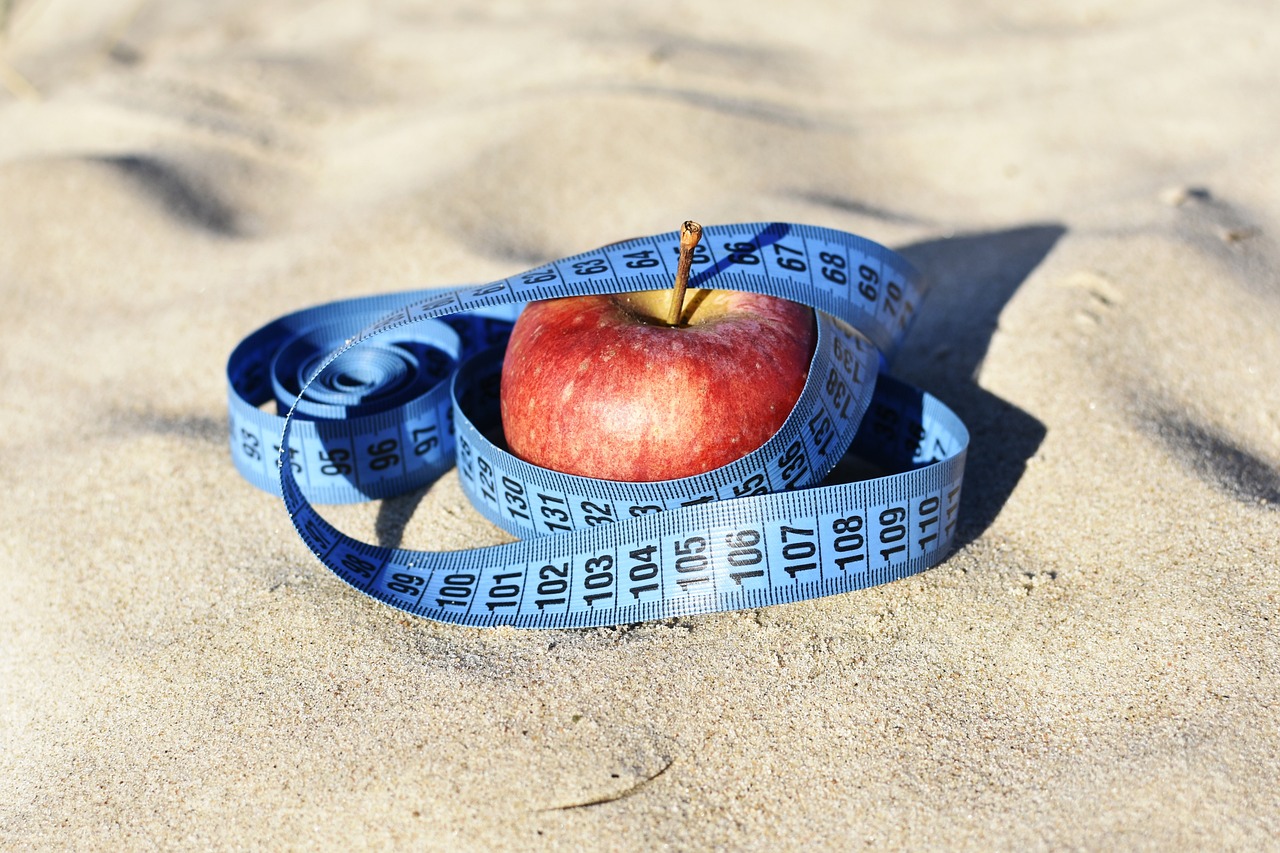
Monitoring Progress and Adjustments
Monitoring your pet's weight and health is not just a one-time task; it’s an ongoing journey that requires diligence and adaptability. Just like humans, pets can experience fluctuations in weight, and keeping a close eye on their progress is essential for effective weight management. You wouldn’t want to overlook subtle changes that could indicate a need for adjustments in their diet or exercise routine, right? Regular monitoring allows you to catch any issues early, ensuring your furry friend stays on track toward a healthier lifestyle.
One of the best ways to keep tabs on your pet's progress is by establishing a routine for weighing them. Aim to weigh your pet at least once a month, using a consistent method—whether that’s at home with a pet scale or during vet visits. Keeping a weight journal can be incredibly helpful. Documenting their weight over time not only helps you visualize trends but also makes it easier to spot any concerning changes. You can use a simple table to track their weight, which might look something like this:
| Date | Weight (lbs) | Notes |
|---|---|---|
| 01/01/2023 | 25 | Starting weight |
| 02/01/2023 | 24 | First month of diet |
| 03/01/2023 | 23 | Continued progress |
Besides weight, it's crucial to monitor other health indicators such as energy levels, coat condition, and overall behavior. If your pet seems lethargic or is having trouble with regular activities, it might be time to reassess their diet and exercise regimen. Remember, weight management is not just about numbers on a scale; it's about your pet's overall well-being.
Setting realistic goals is another vital aspect of monitoring progress. Instead of aiming for drastic weight loss, which can be unhealthy, focus on gradual changes. Aim for a weight loss of about 1-2% of their body weight per week for dogs and slightly less for cats. These small, achievable goals can help ensure that your pet loses weight safely and sustainably.
Don't hesitate to consult with your veterinarian regularly. They can provide invaluable insights and adjustments based on your pet’s individual needs. Your vet can help you determine if your pet is losing weight at a healthy rate and whether any modifications to their diet or exercise plan are necessary. They can also help you navigate any underlying health issues that might be contributing to weight gain or loss.
In conclusion, monitoring your pet’s weight and health is essential for effective management. By keeping a close eye on their progress, setting realistic goals, and consulting with your veterinarian, you can ensure your furry companion leads a healthier, happier life. After all, a little attention today can lead to a lifetime of health for your beloved pet!
- How often should I weigh my pet?
It’s recommended to weigh your pet at least once a month to monitor weight changes effectively. - What should I do if my pet isn’t losing weight?
Consult your veterinarian for advice on adjusting their diet or exercise routine. - Are there any specific signs that indicate my pet is overweight?
Look for difficulty in movement, excessive panting, and a lack of energy as potential signs of being overweight.
Setting Realistic Goals
When it comes to managing your pet’s weight, setting realistic goals is an essential first step. Just like humans, pets need achievable targets to stay motivated and healthy. Think of it this way: if you were trying to lose weight, would you aim to drop 20 pounds in a week? Probably not! The same principle applies to our furry friends. Aiming for gradual changes not only promotes better health but also makes the journey less stressful for both you and your pet.
So, how do you go about setting these realistic goals? First, consider your pet's current weight and their ideal weight. It's important to have a clear understanding of what a healthy weight looks like for your specific breed and age. For instance, a Labrador Retriever may weigh between 55 to 80 pounds, while a Chihuahua might only need to be around 5 to 8 pounds. Knowing these numbers can help you establish a target weight that is not only safe but also attainable.
Next, think about the timeframe for achieving these goals. A good rule of thumb is to aim for a weight loss of 1% to 2% of your pet's body weight per week. This method ensures that the weight loss is gradual and healthy. For example, if your dog weighs 60 pounds, a realistic goal would be to aim for a loss of about 0.6 to 1.2 pounds each week. It might not seem like much, but over time, these small changes can lead to significant improvements in your pet’s health.
Additionally, it’s crucial to involve your veterinarian in this process. They can provide valuable insights tailored to your pet’s specific needs, helping you set appropriate goals based on their overall health, age, and activity level. Regular check-ups can also help you monitor your pet's progress and make necessary adjustments along the way.
To summarize, here are a few key points to keep in mind when setting realistic goals for your pet's weight management:
- Understand your pet's ideal weight range.
- Aim for a gradual weight loss of 1% to 2% per week.
- Consult with your veterinarian for personalized advice.
- Regularly monitor your pet’s progress and be flexible with your goals.
Remember, the journey to a healthier weight is a marathon, not a sprint. Celebrate the small victories along the way, whether it's a little extra energy during playtime or a more active lifestyle. Your pet will thank you for it!
Q: How often should I weigh my pet?
A: Weigh your pet every 2-4 weeks to track their progress effectively. This frequency allows you to make timely adjustments to their diet and exercise routine.
Q: What if my pet isn’t losing weight?
A: If your pet isn’t losing weight, consult your veterinarian to rule out any underlying health issues. They may suggest a different diet or exercise plan tailored to your pet’s needs.
Q: Can I give my pet treats while trying to manage their weight?
A: Yes, but be mindful of the quantity and quality of treats. Opt for low-calorie options and account for them in your pet’s daily caloric intake.
Q: How can I keep my pet motivated during their weight loss journey?
A: Incorporate fun activities and playtime into their routine. Use positive reinforcement, such as praise and low-calorie treats, to keep them engaged and motivated.
Consulting with Your Veterinarian
When it comes to managing your pet's weight, consulting with your veterinarian is not just a good idea; it's essential. Think of your vet as your pet's personal trainer and nutritionist rolled into one. They have the expertise to guide you through the maze of dietary options and exercise routines tailored specifically for your furry friend. Just like how we might seek advice from a professional when embarking on a fitness journey, your pet deserves the same level of care and attention.
Your veterinarian can help you establish a baseline for your pet's ideal weight, taking into account factors such as age, breed, and overall health. They can also perform a thorough examination to identify any underlying health issues that may contribute to weight gain, such as hormonal imbalances or metabolic disorders. This is crucial because, without addressing these issues, your efforts to manage your pet's weight may be futile.
Moreover, regular check-ups with your vet can help monitor your pet's progress. They can provide you with a structured weight loss plan, including specific dietary recommendations and exercise regimens. For instance, your vet may suggest a gradual weight loss of about 1-2% of your pet's body weight per week, which is a safe and sustainable goal. This approach not only helps your pet shed excess pounds but also ensures that they are losing weight in a healthy manner.
During your consultations, don't hesitate to ask questions. Here are some important topics to discuss:
- What is my pet's ideal weight?
- Are there any specific health concerns I should be aware of?
- What type of diet do you recommend for weight management?
- How much exercise should my pet get daily?
- Should I consider any dietary supplements?
Additionally, your vet can help debunk common myths about pet nutrition and exercise. For example, many pet owners believe that a "little extra" food or treats won’t hurt, but even small amounts can add up quickly and lead to obesity. Your veterinarian can provide guidance on portion control and how to choose low-calorie treats that won't sabotage your pet's weight loss efforts.
In summary, involving your veterinarian in your pet's weight management journey is crucial for their overall health and well-being. With their professional guidance, you can create a personalized plan that not only helps your pet achieve a healthy weight but also enhances their quality of life. So, don’t wait until your pet is facing serious health issues—schedule that vet appointment today and take the first step towards a healthier future for your furry companion!
Here are some common questions pet owners have regarding weight management:
- How often should I take my pet to the vet for weight checks? It's advisable to visit your veterinarian every 3 to 6 months for weight assessments, especially if your pet is on a weight loss plan.
- Can I use human food in my pet's diet? While some human foods are safe for pets, it's crucial to consult your vet to avoid any harmful ingredients.
- What are signs that my pet is overweight? Look for difficulty in breathing, lack of energy, and difficulty in performing normal activities like playing or walking.
- Are there specific breeds more prone to obesity? Yes, certain breeds, such as Labradors and Beagles, are more susceptible to weight gain due to their genetics and behavior.
Frequently Asked Questions
- What are the main causes of pet obesity?
Pet obesity often stems from a combination of factors, including poor dietary choices, lack of exercise, and sometimes genetic predispositions. Just like humans, pets can easily gain weight if they consume more calories than they burn. It's crucial to understand your pet's specific needs and habits to tackle this issue effectively.
- How can I tell if my pet is at a healthy weight?
To determine if your pet is at a healthy weight, you can use the Body Condition Scoring (BCS) system. This system evaluates your pet's body shape and fat distribution. Additionally, you should be able to feel your pet's ribs without excessive pressure and see a noticeable waistline when viewed from above.
- What should I include in my pet's balanced diet?
A balanced diet for your pet should include high-quality protein, healthy fats, carbohydrates, vitamins, and minerals. It's essential to choose pet food that meets these nutritional requirements and to control portion sizes to avoid overfeeding. Consulting with your veterinarian can help you select the best food for your furry friend.
- How much exercise does my pet need?
The amount of exercise your pet requires can vary based on their age, breed, and health status. Generally, dogs need at least 30 minutes of moderate exercise daily, while cats benefit from shorter, more intense play sessions. Incorporating playtime into your routine is a great way to keep them active and engaged.
- Can I prepare homemade meals for my pet?
Yes, you can prepare homemade meals for your pet, but it's vital to ensure they are balanced and meet all nutritional needs. Avoid common pitfalls like excluding essential nutrients or using harmful ingredients. Consulting with a veterinarian or a pet nutritionist can help you create a healthy homemade diet.
- How do I monitor my pet's weight progress?
Monitoring your pet's weight progress involves regular weigh-ins and keeping a log of their weight over time. You should also observe changes in their body condition and overall health. Adjustments to their diet and exercise routine may be necessary based on these observations.
- When should I consult a veterinarian about my pet's weight?
If you notice significant weight gain or loss, or if your pet shows signs of health issues related to weight, it's time to consult a veterinarian. Regular check-ups can help catch potential problems early and provide you with tailored advice for maintaining your pet's health.

